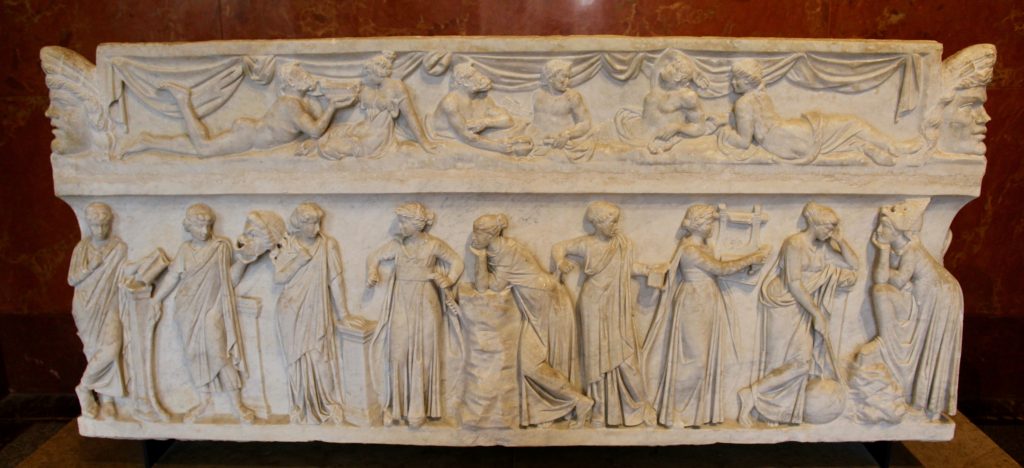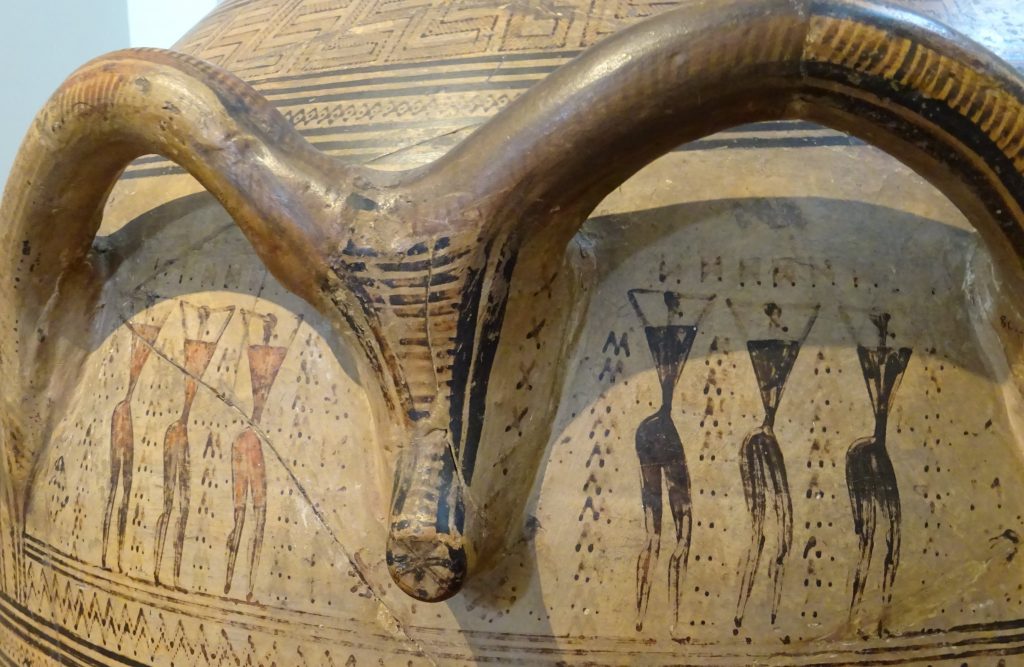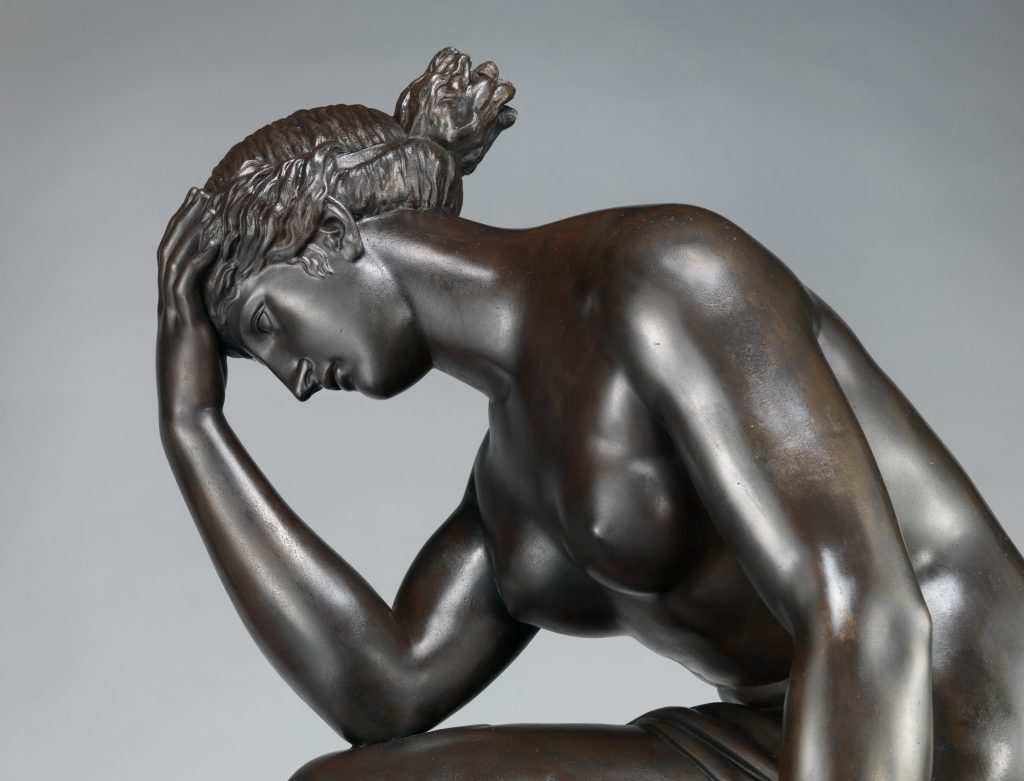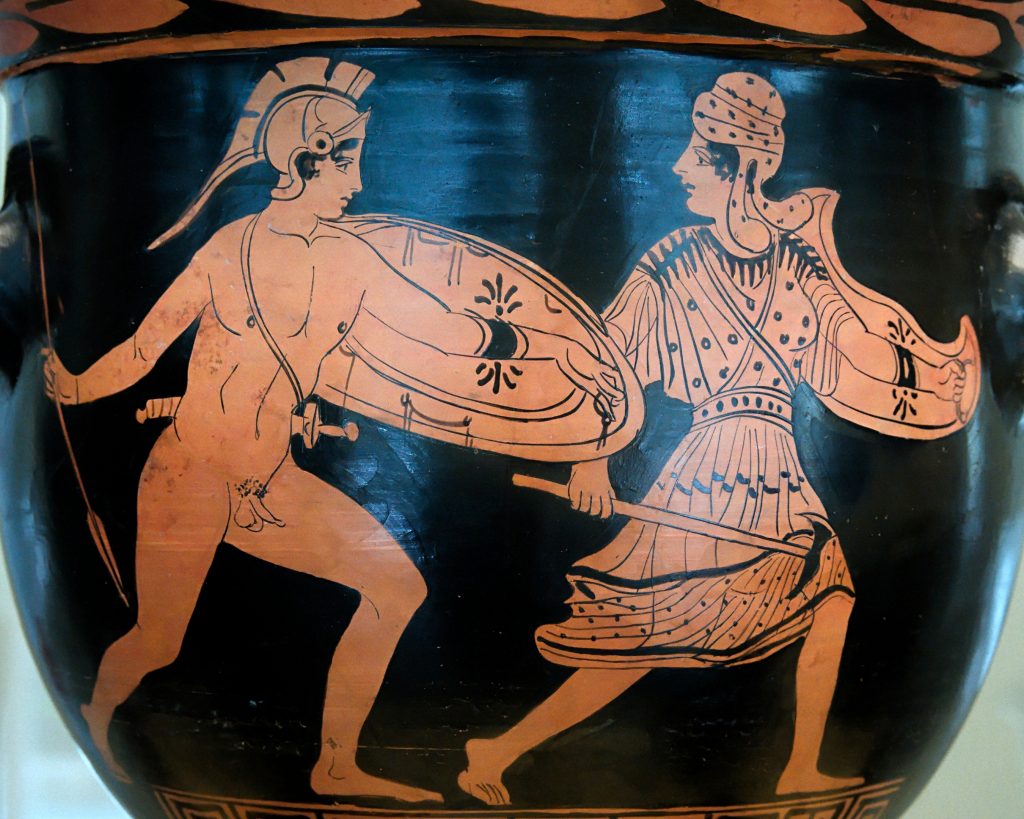The Ancient Greek Hero in 24 Hours[1] is based on a course that Professor Gregory Nagy has been teaching at Harvard University since the late 1970s.
The book discusses selected readings of texts, all translated from the original Greek into English. The texts include the Homeric Iliad and Odyssey; selected Homeric Hymns; the Hesiodic Theogony and Works and Days; selected songs of Sappho and Pindar; selections from the Histories of Herodotus; the Agamemnon, Libation Bearers, and Eumenides of Aeschylus; the Oedipus Tyrannus and Oedipus at Colonus of Sophocles; the Hippolytus and Bacchae of Euripides; and the Apology and Phaedo of Plato. Also included are selections from Pausanias and Philostratus. It is divided into 24 chapters, 24 Hours, each exploring one or several topics.
This series of galleries attempts to illustrate each Hour with visual art. We will have 6 galleries corresponding to 4 hours each. This first gallery covers Hours 1–4.
Coming next: Part 2: Hours 5–9
Image credits
Herakles and The Labor of the Golden Apples, metope, Archeological Museum of Olympia.
Photo: Kosmos Society
Athena, Herakles and the Stymphalian Birds, metope, Archeological Museum of Olympia.
Photo: Kosmos Society
The Apotheosis of Hercules. Dcoetze. Palais de Versailles.
Public domain via Wikimedia Commons
Hercules Gilded Bronze Roman 2nd century BCE
https://creativecommons.org/licenses/by-sa/3.0/deed.en
The Muses Clio, Euterpe and Thalia. Louvre, Shuishouyue
Public Domain via Wikimedia Commons
Sarcophage of the Muses, Marble, c200 CE Louvre
Photo: Kosmos Society
Achilles in his tent with Patroclus, Playing a Lyre, surprised by Ulysses and Nestor. Louvre, Shonagon
Public Domain via Wikimedia Commons
Sarcophagus with the Calydonian hunt, representing the hero Meleager and the goddess Artemis. Proconnesian marble, Roman artwork.
Photo: Jean-Pol Grandmont, Creative Commons CC BY-SA 3.0 via Wikimedia Commons
Meleager killing a boar, Marble. Nicolas Coustou, c 1706. Louvre.
Photo: Kosmos Society
Lament, details from a terracotta funerary plaque, c 520–510 BCE. Metropolitan Museum of Art.
Photo: Kosmos Society
Lamenting figures, detail from Dipylon Amphora, Geometric, c 750 BCE. National Archaeological Museum of Athens.
Photo: Kosmos Society
Threnouses – Women in Lament, by M. Zoie Lafis. Oil on board. 2003
Photography by Tanya Rosen – Jones
Women in Procession, by M. Zoie Lafis, 2003. Oil on Canvas.
Photography by Tanya Rosen – Jones
Theed, William the Elder Thetis Transporting Arms for Achilles (detail) c 1804–1812. Metropolitan Museum of Art.
Creative Commons CC0 1.0 Universal Public Domain Dedication, via Wikimedia Commons
Sappho and Alcaeus
Public Domain via Wikimedia Commons. This is a faithful photographic reproduction of a two-dimensional, Public Domain work of art
Achilles departing
Creative Commons Attribution 2.5 Generic via Wikimedia Commons
Thorvaldsen, Bertel. Achilles and Penthesileia, 1837.
Public domain, via Wikimedia Commons
Creusa Painter: The battle of Achilles and Penthesileia, Lucanian red-figure bell-krater. Late 5th century BCE.
Photo Marie-Lan Nguyen (User Jastrow), Creative Commons CC BY 2.5, via Wikimedia Commons
Note: Images have been selected from pictures that are freely available with open source or Creative Commons licenses, or (attributed to “Kosmos Society”) from photographs sent in by community members for the purpose, used with permission. The images in this post are intended to suggest the subject, rather than illustrate exactly—as such, they may be from other periods, subjects, or cultures. Attributions are based where possible by those shown by museums, or on Wikimedia Commons or Flickr, at the time of publication on this website.
Images accessed April 2019.
[1] Nagy, Gregory. 2013. The Ancient Greek Hero in 24 Hours. Harvard University Press, Cambridge, MA: 2013. Available online at the Center for Hellenic Studies.
https://nrs.harvard.edu/urn-3:hul.ebook:CHS_NagyG.The_Ancient_Greek_Hero_in_24_Hours.2013
____
Hélène Emeriaud, Janet Ozsolak, and Sarah Scott are members of the Kosmos Society.

















